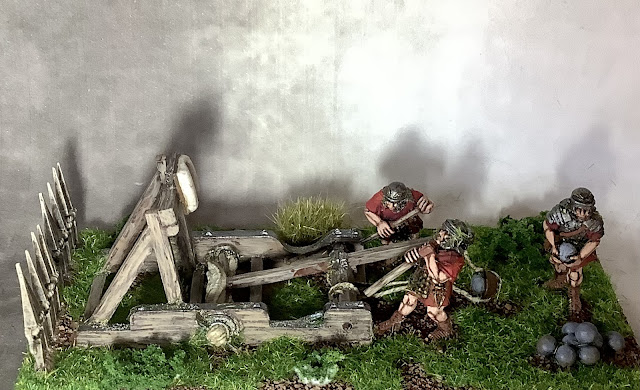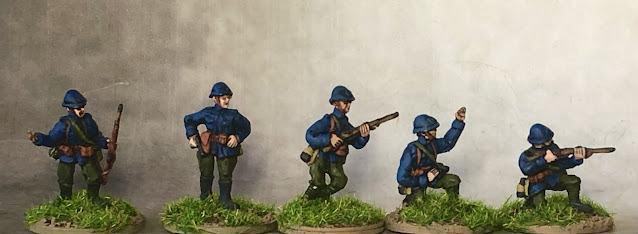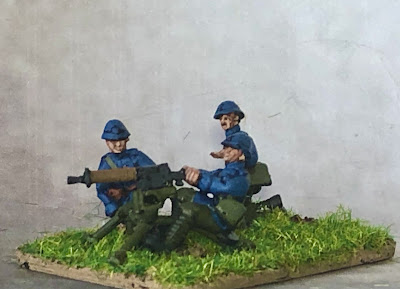Australian M113s in Vietnam .

The Australian Armoured units had elements serving in South Vietnam for nearly six years. Between 1966 and 1972 the men served in every major operation conducted by the 1st Australian Task Force (1ATF), including the Tet Offensive, the 1968 battles for Fire Support Bases Coral and Balmoral, and the battle of Binh Ba in 1969. Using Armoured Personal Carriers (APCs), the regiment's squadron was a highly mobile force that served throughout Phuoc Tuy province.
Australian APCs had been serving in Vietnam since 1965: initially with the 1st Troop, A Squadron, 4th/19th Prince of Wales Light Horse Regiment, subsequently re-named the 1st APC Troop; and then with 1st APC Squadron. In January 1967 1st APC Squadron was split one half became A Squadron, 3rd Cavalry Regiment the other 2nd Cavalry Regiment, with the 2nd remaining in Australia for training and rotation. A squadron's 3rd Cavalry regiment strength in South Vietnam at the time was 117: ten officers, 14 warrant officers/sergeants, and 93 other ranks. The squadron's strength increased over time and by August 1971 had grown to 169 men: 15 officers, 22 warrant officers/sergeants, and 132 other ranks. The scorpion symbol though was not adopted until after 1971, originally designed by the mortar troop as the “sting in the tail” of the squadron.
I have collected the track (M113) in troop order, as much as I can
A Squadron 3rd Cavalry regiment
 |
| “& Tears” call sign three one Alpha 31 ARN 134738 |
1 Troop
“Blood” call sign three one 31
“Sweat” call sign three one Bravo 31B ARN ……55“& Tears” call sign three one Alpha 31A ARN 134738
“Tene - Nui” Call sign one one Alpha 11A ARN 134357 two 30 cals 74c turret
“UBEAUT” call sign one two Bravo 12B
2 troop
“Tinkerbell”
“Miss carriage” call sign
“The Pig” call sign two two Bravo 22B
3 troop
"the Good" call sign eight six 86 ARN 84343
"The Bad" call sign eight six Alpha 86A (two 30 cals 74c turret)
"The Ugly" call sign eight six Bravo
Fire Support troop
In mid-1971 the squadron received six M113A1 Fire Support Vehicles (FSVs), a M113 carrier mounted with a Saladin turret and armed with a 76 mm gun. The majority of the FSVs crew were seconded from the 2nd Cavalry Regiment and posted on strength to the 3rd Cavalry Regiments. More heavily armed, the FSVs were still only lightly armoured and were not intended to replace Centurion tanks in offensive tasks. It was felt however, they could relive the Centurions from their role in protecting the fire support bases, thereby allowing the tanks a greater role in supporting 1ATF's operations.
1971 first four vehicles
“SANDGROPER” call sign four two (42)
“DENISE” call sign 42A
“COMALCO” call sign 42B
“TINY TEDDY” call sign four two Charlie 42C
Late 1971 a further two were delivered
“BEWITCHED” call sign 41
“BEAST BOTHERED” call sign four one Alpha 41A ARN 134711 (on display in Australia)
I have found one other, not sure if it a rename or new vehicle
XXXX
B Sqaudron 3rd Cavalry Regiment
1 troop
“The Glen” call sign one three 13 ( T50 Turret fitted )
"The Nympho" ( T 50 turret) one three alpha (13A), ARN 134305
2 troop
“Snoopy” call sign two zero (fitted with T50 turret)
"Denise"
"Shelly"
“Bronwyn ” call sign two one Alpha 21A
“Dehydrated” call sign 29 M later renamed in 1972 “Irish Power”
3 troop
“Z” call sign three zero Alpha 30A
"Cherryboy" call sign three nine M 39M ARN134266
"Gaylord" call sign three three Bravo 33B
Unplaced M113A1s with T50 turrets.
"Bewildered"
"Foul Boy"
Support Troops
106 Field Workshops Royal Australian Electrical and Mechanical Engineers (RAEME)
M113A1 Fitters vehicles
“White Winged Warrior” call sign nine eight Alpha 98A
"Puff the magic dragon"(ARN) 134377
“Miss Hellfinger” call sign 98B
Royal Australian Engineers
The 1st Regiment Royal Australian Engineers modified three carriers for anti personnel mine clearance operations, extra armour was fitted to the belly and the sides. Various contraptions were manufactured by RAEME workshops.
 |
| Her Majesty’s Armoured Personnel Carrier Flint RAE |
1 Troop Royal Australian Engineers
HMAPC Flint ARN134226
HMAPC Steel call sign nine two S 92S was fitted with a small blade
HMAPC George call sign one two Alpha 12A
cheers
Matt














